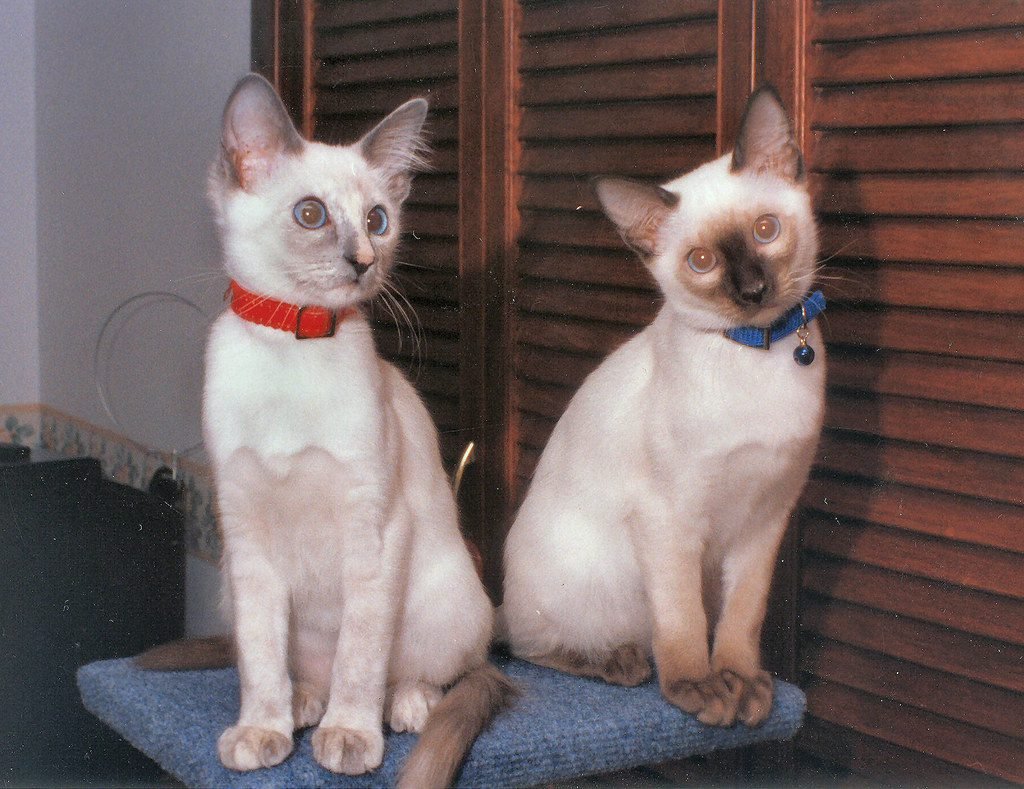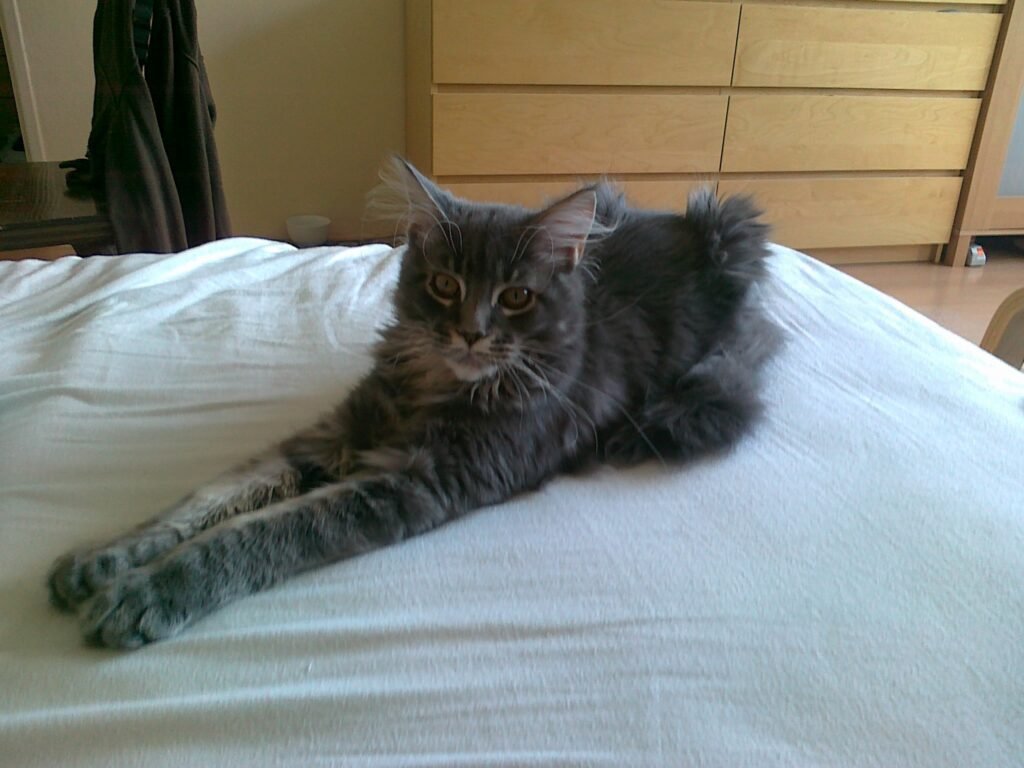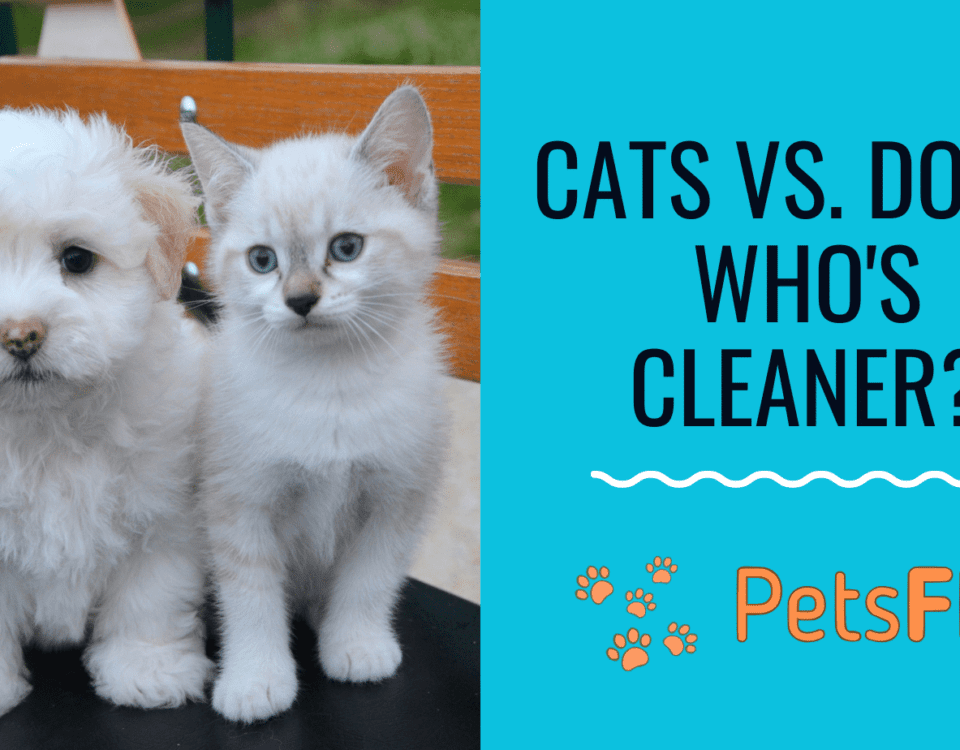


Do male dogs mate with their mother when they reach puberty?
December 31, 2023


Are Calico Cats Hypoallergenic? Should You Get Them?
December 31, 2023The term “catwalk” is often used to describe the elegant and regal way cats move, mainly due to their long and graceful legs. However, if a cat’s hind legs appear bent or not straight, it might be described as “cow-hocked.”
This term doesn’t directly relate to cows but to a specific cat condition. So, what exactly does it mean when a cat is cow-hocked?
Cow-hocked deformity, or cow hocks or bow-legged, refers to a distinctive physical trait in cats where their hind legs are turned inwards, bringing the hocks (the joints found in the hind legs) closer to each other. This particular alignment can impact how a cat walks and its overall stance.
In this article, we will explore the specifics of this deformity in cats, discussing what leads to it, its possible effects, and the available treatment options.
Why Is A Cat Bow-Legged?
There are several reasons why a cat might be bow-legged, which is a condition where a cat’s legs curve outward rather than being straight.
This condition can stem from genetic inclinations, nutrition imbalances, irregular growth, or developmental problems.
Bow-leggedness can involve one or both legs and might lead to challenges in the cat’s ability to walk or run effectively.
Symptoms Of Cow-Hocked in Cats
Here are seven key symptoms associated with cow-hocked deformity in cats, detailed in a point-by-point manner:
- Inward Angulation of Hind Limbs: A noticeable symptom of cow-hocked deformity is the inward bending of the cat’s hind limbs. This is most evident when looking at the cat from behind, where the hocks (joints in the hind legs) seem unusually close together.
- Constricted Walking Style: Cats with cow-hocked deformities often display a more confined walking pattern. Their hind legs may brush against each other while moving, leading to a less graceful and agile locomotion.
- Paddling or Swaying Hind Legs: A characteristic symptom is the paddling or swaying motion in the hind legs during movement. This can be seen as the cat’s paws turning inward or outward instead of pointing directly forward while walking or running.
- Challenges with Balance and Stability: Affected cats may have trouble with balance and stability, making them more susceptible to stumbling, tripping, or falling, especially during fast turns or sudden directional shifts.
- Impaired Jumping and Climbing Abilities: Abnormal leg positioning and angulation can hinder a cat’s ability to jump or climb effectively. They may lack the necessary strength and coordination, leading to a decrease in overall mobility.
- Muscle Stiffness or Weakness in Hind Legs: Cow-hocked cats might show signs of muscle stiffness or weakness in their hind legs, noticeable difficulties in fully extending or flexing the limbs, a reduction in muscle tone, or a decrease in muscle mass.
- Potential for Orthopedic Complications: The irregular alignment of the hind limbs over time can increase the strain on joints, ligaments, and bones, potentially resulting in orthopedic problems like arthritis, joint pain, or injuries such as sprains or strains.
If you notice any of these symptoms in your cat or suspect any health issues, it’s crucial to consult a veterinarian for a proper evaluation and suitable treatment plan.
Recommended Reading: Why is My Male Cat Attacking Female Cat? How To Stop?
Identification & Diagnosis Of Bow-Legged Cats
The recognition of cow hocked deformity in cats is generally uncomplicated due to the visible inward bending of the hind legs. However, a thorough veterinary assessment is essential to measure the extent of the deformity and uncover any root causes.


How to Identify Cow Hock in Cats
To get a comprehensive understanding of the condition, veterinarians may employ X-rays and additional diagnostic procedures to examine the joints, bones, and the overall anatomy of the hind legs.
Can Cow Hock Be Treated?
Correcting cow hocks in cats is feasible in specific scenarios, depending on the root cause and the severity of the condition. For milder instances, using management strategies like physical therapy and changing the cat’s environment can help improve its walking style and muscles.
On the other hand, in more severe cases or when the deformity significantly impairs the cat’s quality of life, surgical options might be considered. These could include procedures like corrective osteotomy or stabilizing the joints surgically.
Rubbing the stomach, kneading, performing the butt rub dance, stretching on a cushion, the wheelbarrow maneuver, placing a scrunchie on the paw, the ‘rock on’ gesture, and begging might not directly treat the root cause of cow-hocked deformity in cats.
However, these actions can provide some comfort and may help to alleviate the condition to a certain degree.
What Is Sickle-Hocked? Is It The Same As Cow-Hocked?
Sickle Hocks: This condition is characterized by excessive angulation at the hock joints (the joints in the hind legs), making the legs appear curved or bent forward, similar to a sickle or a crescent moon. Cats with sickle hocks may exhibit altered gait and movement challenges.
Cow-Hocked: In contrast, cow-hocked refers to a situation where the hock joints of the hind legs turn inward, bringing the legs closer to these joints. This results in the hind legs having a resemblance to the leg stance of a cow. Cats with cow-hocked deformities often walk with a narrower stride and might struggle with maintaining balance and stability.


Sickle-Hocked in Cats
These conditions, sickle hocks and cow-hocked are structural anomalies that can impact a cat’s mobility. Consulting with a veterinarian is essential for a precise diagnosis and determining the best action.
Consequences & Complications
The cow-hocked deformity in cats can lead to several potential consequences and complications.
Due to the abnormal alignment of the legs, there can be increased strain on the joints, ligaments, and muscles, which might result in discomfort, pain, and a heightened risk of sustaining injuries.
In cases where the deformity is severe, cats may face challenges with their mobility and struggle to maintain balance.
Caring for Cats with Cow-Hocked Deformity: Comfort and Mobility Enhancement
Specific steps can improve the comfort and mobility of cats suffering from cow-hock deformity. Creating a safe, accessible living space with soft, joint-supportive bedding can help relieve discomfort and lessen joint stress. Regular physical activity and keeping the cat at a healthy weight are crucial for their overall health management.
Implementing Physical Therapy and Rehabilitation
Physical therapy and rehabilitation methods are key in managing cow hocked deformity in felines. These methods include exercises aimed at enhancing muscle strength, balance, and coordination, along with activities that preserve the flexibility of the joints.
Consultation with a veterinarian or a qualified animal rehabilitation expert is advisable to create an individualized therapy program.
Support for Cats with Cow-Hocked Deformity
Cats with cow-hocked deformities benefit greatly from supportive measures to ease their daily challenges. Using assistive tools such as ramps or steps can significantly simplify their access to higher areas.
Supplements that support joint health, like glucosamine and chondroitin, can also be beneficial in reducing joint inflammation and promoting overall joint wellness.
Proactive Steps in Kittens and Breeding for Cow Hock Prevention
The prevention of cow-hocked deformity begins with responsible breeding practices that emphasize the selection of cats with sound structural health.
For kittens, ensuring proper nutrition during their growth stages and adequate exercise and socialization is vital to their holistic development and minimizing the chances of developing such deformities.
Editor’s Pick: Why does cat litter keep getting stuck to my cat’s bum? [Solutions]
Living With A Cow-Hocked Pet Cat
Living with a cow-hocked cat requires understanding and adaptation to meet their unique needs. These cats can lead happy and fulfilling lives with the proper care and environment. Here are some considerations:
- Adapted Environment: Create a living space that is comfortable and accessible for your cow-hocked cat, with easy access to all their necessities like food, water, and litter boxes.
- Regular Veterinary Check-ups: Ensure regular vet visits to monitor their condition and any necessary medical interventions.
- Gentle Exercise and Play: Engage your cat in gentle exercise and play activities that are suitable for their condition, avoiding anything too strenuous that might strain their legs.
- Nutritional Management: Provide a balanced diet that supports joint health and maintains an ideal weight to reduce stress on their legs.
- Comfort Measures: Offer soft bedding and resting areas to help alleviate discomfort, and consider using joint supplements as your veterinarian recommends.
- Patience and Understanding: Be patient and understanding of your cat’s limitations, giving them time and assistance, especially when climbing or jumping.


Are There Any Particular Cat Breeds More Prone To Cow-Hocked Deformity?
Yes, certain cat breeds are more prone to cow-hocked deformity. This is often due to genetic factors and breeding practices. These breeds often include those with specific physical traits or those bred for certain conformational standards.
Some of the species that might be more susceptible to cow-hocked deformity include:
- Persian Cats: Known for their distinctive body shape and long fur, Persian cats may be prone to various skeletal deformities, including cow-hocked legs.
- Maine Coon Cats: As one of the largest domestic cat breeds, Maine Coons can sometimes exhibit structural issues due to their size and genetics.
- Scottish Fold Cats: This breed is mainly known for its unique ear structure but can also predispose to skeletal issues, including cow-hocked deformity.
- Bengal Cats: While athletic and agile, they may also be susceptible to certain structural issues because of their specific breeding.


Maine Coon Kitten
It’s important to note that while these breeds might have a higher predisposition, cow-hocked deformity can still occur in any breed, including mixed breeds. Regular veterinary examinations and responsible breeding are key in managing and preventing this condition.
Also, Read: How To Prevent Cat’s Biting and Humping Behavior?
Conclusion
Cow-hocked deformity in felines can affect their movement and general health. However, with appropriate veterinary attention, treatment, and supportive actions, the difficulties related to this condition can be efficiently handled.
Focusing on your cat’s comfort, implementing the needed treatments, and consulting with veterinary professionals will enable your cow-hocked cat to enjoy a satisfying life.



